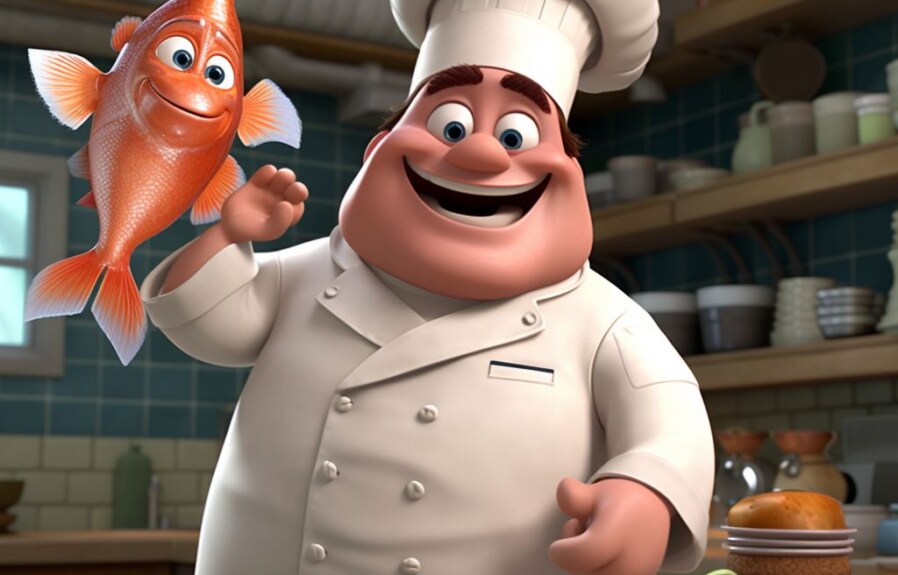Salmon is one of the most popular fish varieties, and for good reason. It has a delicious taste, a wide variety of health benefits, and is incredibly versatile in the kitchen. However, determining whether salmon is cooked properly can be a bit of a challenge, especially for inexperienced cooks. Overcooking can lead to dry, tough meat, while undercooking can pose a significant health risk. Fear not, though – with a few expert tips and tricks, you’ll be able to tell with confidence whether your salmon is cooked to perfection. In this article, we’ll cover everything you need to know about how to know if salmon is cooked, so you can enjoy this tasty fish without worry.
1. The Secret to Perfectly Cooked Salmon: Tips and Tricks You Need to Know
Salmon is a popular seafood that is packed with nutrients and has a delicate and buttery flavor. To ensure that your salmon is cooked to perfection and retains its flavor, there are specific tips and tricks that you need to know.
Choose the Right Salmon Cut
When it comes to cooking salmon, the cut you choose can impact the taste and texture of the fish. The most common cuts of salmon are fillets and steaks. Fillets are thin and are suitable for grilling, while steaks are thicker and are perfect for baking and broiling. For pan cooking, choose a fillet that is skinless as the skin can cause the fish to curl up while cooking.
Remove the Pin Bones
Before cooking, run your fingers over the salmon and check for any small bones. Use tweezers or pliers to remove these bones carefully, making sure that you do not damage the fish in the process. This ensures that your salmon fillet is bone-free, making it easier to cook and eat.
Season Your Salmon
To ensure that your salmon is flavorful, marinate it for at least 30 minutes before cooking. You can use oil, spices, and herbs to add flavor to your salmon, but remember not to over-season it. A simple seasoning of salt and pepper is often enough to enhance the taste of salmon without overpowering it.
In conclusion, choosing the right salmon cut, removing the pin bones, and seasoning your salmon are essential tips for perfectly cooked salmon. Follow these simple tricks, and you will be on your way to cooking delicious salmon like a pro.
2. Understanding the Different Ways to Cook Salmon: Grilling, Baking, Broiling, and Pan-Searing
Salmon can be cooked in a variety of ways, and each method offers a unique flavor and texture. Whether you prefer the smoky taste of grilled salmon or the crispy crust of pan-seared salmon, here are the different ways you can cook this delicious fish.
Grilling
Grilling salmon is a popular method that imparts a smoky flavor into the fish. To grill salmon, preheat the grill to medium-high heat and lightly oil the grill grates. Place the salmon fillets skin side down on the grill and cook for 5-7 minutes. Flip the fillets over and cook for an additional 5-7 minutes, or until the salmon reaches an internal temperature of 145°F.
Baking
Baking salmon is a simple method that requires minimal effort. Preheat the oven to 425°F and line a baking sheet with parchment paper. Place the salmon fillets on the baking sheet and brush them with olive oil. Season with salt, pepper, and any herbs or spices of your choice. Bake for 12-15 minutes, or until the salmon is cooked through and flakes easily with a fork.
Broiling
Broiling salmon is a quick and easy method that creates a crispy crust on the fish. Preheat the broiler and place the salmon fillets on a broiler pan. Brush the fillets with olive oil and season with salt, pepper, and herbs. Broil the salmon for 6-8 minutes, or until the crust is golden brown and the salmon is cooked through.
Pan-Searing
Pan-searing salmon is a great method for creating a crispy skin and tender interior. Heat a non-stick pan over medium-high heat and add a tablespoon of olive oil or butter. Place the salmon fillets skin-side down in the pan and cook for 3-4 minutes. Flip the fillets over and cook for an additional 2-3 minutes or until the salmon is cooked through.
Try each of these cooking methods to discover which one you prefer!
3. How to Check for Doneness: The Key Signs That Your Salmon is Cooked Through
To serve perfectly cooked salmon, it is important to know how to check for doneness. There are three key signs that will indicate whether your salmon is cooked through:
Color: The color of the salmon meat should be opaque and have a consistent pink color throughout. If the darker sections still appear raw or translucent, it may need more cooking time.
Flakiness: When you press down on the salmon with a fork, the meat should easily flake apart into smaller pieces. If the meat is still firm and hard to separate, it may not be fully cooked.
Internal Temperature: The most reliable way to check for doneness is by using a kitchen thermometer. The internal temperature of cooked salmon should reach 145°F (62.8 °C). Insert the thermometer at the thickest part of the fish to get an accurate reading.
Keep in mind that these signs may vary slightly depending on the cooking method used. For example, if you pan-sear salmon, it is good to check the color and flakiness of the fish as it cooks. On the other hand, if you bake salmon, relying on the internal temperature may be the best indicator of doneness.
By mastering these key signs for determining doneness, you can cook perfect salmon every time. It ensures that the fish is cooked enough to be delicious and safe to eat, but not overcooked to the point of dryness.
4. Don’t Overcook: The Risks and Consequences of Overcooking Your Salmon
Overcooking your salmon can be disastrous for its taste and texture. It can turn a delicious, moist fish into something dry, bland, and even rubbery. But aside from ruining the experience of eating it, overcooking your salmon can also have some health risks.
When you overcook fish, it can break down the healthy omega-3 fatty acids that are essential for good heart and brain health. In addition, overcooked fish can produce harmful compounds like heterocyclic amines and polycyclic aromatic hydrocarbons, which have been linked to cancer.
To avoid overcooking your salmon, it’s important to keep an eye on it as it cooks. Remember, salmon will continue to cook even after you take it off the heat, so it’s better to remove it from the heat a little early rather than a little late. Additionally, you can use a thermometer to check the internal temperature of the fish – you want it to reach 145°F for optimal safety and flavor.
One way to prevent overcooking is to use gentle cooking methods that don’t expose the fish to high heat for too long. For example, you can try cooking salmon in a sous vide machine, which allows you to cook the fish at a low and precise temperature. Or, you can try poaching or steaming your salmon, which allows the fish to cook gently in a flavorful liquid without drying out. By paying attention to your cooking method and being cautious not to overcook your salmon, you can avoid those unpleasant consequences and enjoy a delicious and healthy meal.
5. Temperature Matters: Using a Thermometer to Ensure Your Salmon is Cooked to Perfection
Knowing the temperature of your salmon is the most accurate way to determine if it is cooked through. A thermometer is an essential tool in every chef’s kitchen, and it is particularly useful when cooking proteins like salmon. Using a thermometer takes the guesswork out of the equation, allowing you to cook your salmon to perfection every time.
The USDA recommends cooking fish to an internal temperature of 145°F (63°C). Insert the thermometer into the thickest part of the salmon, making sure it doesn’t touch the bone, as this can alter the reading. Wait for a few seconds to allow the temperature to stabilize, and then read the temperature displayed on the thermometer.
Keep in mind that the temperature of your salmon will continue to rise for a few minutes after you remove it from the heat source. This is called carryover cooking, and it can cause your salmon to overcook if you’re not careful. To prevent this from happening, remove your salmon from the heat source when it reaches an internal temperature of 140°F (60°C), then let it rest for a few minutes before serving.
In addition to using a thermometer, it’s also important to understand the difference between rare, medium-rare, medium, and well-done salmon. These terms refer to the doneness of the fish, based on its internal temperature. A rare salmon will have an internal temperature of around 120°F (49°C), while a well-done salmon will have an internal temperature of around 160°F (71°C). Use the temperature guidelines to ensure that your salmon is cooked to your desired level of doneness.
6. Time and Timing: How Long to Cook Salmon Based on the Thickness and Type of Fish
Cooking salmon may seem tricky, but it is actually quite simple if you keep in mind a few key factors. One of these factors is timing. Knowing how long to cook salmon based on its thickness and type can make all the difference. Here are some guidelines to follow:
For Baked Salmon:
- For a fillet that is 1 inch or less in thickness, bake for about 12-15 minutes at 375°F.
- If the fillet is thicker than 1 inch, add 3-5 minutes per half-inch of thickness.
- For salmon steaks or thicker cuts, bake for 15-20 minutes.
For Grilled Salmon:
- For a fillet that is 1 inch or less in thickness, grill for about 4-6 minutes per side over medium heat.
- If the fillet is thicker than 1 inch, add 2-3 minutes per half-inch of thickness.
- For salmon steaks or thicker cuts, grill for about 6-8 minutes per side.
For Pan-Searing Salmon:
- For a fillet that is 1 inch or less in thickness, sear for about 3-4 minutes per side over medium heat.
- If the fillet is thicker than 1 inch, add 1-2 minutes per half-inch of thickness.
- For salmon steaks or thicker cuts, sear for about 4-6 minutes per side.
It is important to note that these times are just an estimate, and the actual cooking time will depend on the thickness and type of salmon. To ensure that your salmon is cooked to perfection, use a thermometer to check its internal temperature. The ideal temperature for cooked salmon is 145°F.
Conclusion
Knowing how to cook salmon to perfection is all about timing. Make sure you understand how long to cook salmon based on its thickness and type, and use a thermometer to check for doneness. With these tips and tricks, you can enjoy delicious, perfectly cooked salmon every time!
7. Serving and Enjoying: Tips and Ideas for Serving Delicious Salmon at Home
After all the hard work, it’s now time to savor the delicious taste of your perfectly cooked salmon. But just like preparing it, serving and enjoying it requires some skills, too. Here are some tips and ideas to help you serve and enjoy your delicious salmon at home:
1. The Right Sides
Pair your salmon with the right side dishes to bring out its natural flavor even more. You can go for roasted vegetables, mashed potatoes, or a simple salad. A simple lemon butter sauce drizzled over your salmon can also add an extra kick of flavor.
2. Presentation Matters
Make your salmon dish more attractive by adding some color and texture. Garnish it with some fresh herbs, like dill or parsley. You can also add some sliced lemons, cherry tomatoes, or avocado slices for a pop of color.
3. Experiment with Flavors
Salmon is a versatile fish that can adapt to different flavors and cooking styles. Don’t be afraid to experiment with different spices, herbs, and sauces. Some great options include teriyaki glaze, garlic butter sauce, and honey mustard.
4. Leftovers are Great, too
If you have some leftover salmon, don’t throw it away. Use it in your breakfast eggs, or add it to your lunch salad. You can also make a delicious salmon burger or wrap for a quick and healthy meal.
Remember, the key to serving and enjoying delicious salmon at home is creativity and experimentation. Try different recipes and techniques until you find what works best for you.
People Also Ask
How can you tell if salmon is cooked through?
One of the easiest ways to check if salmon is cooked is to use a fork or knife and gently press on the thickest part of the salmon. If it flakes easily and the color has changed from translucent to opaque, it is done.
What temperature should salmon be cooked to?
The FDA recommends cooking salmon to an internal temperature of 145°F. When using a meat thermometer, insert it in the thickest part of the salmon to get an accurate temperature reading.
What is the white stuff that comes out of salmon when cooking?
The white substance is called albumin and it is a protein that is naturally found in fish. When salmon is cooked, the heat causes the albumin to be released, which makes it visible on the surface of the fish.
Can you eat undercooked salmon?
Eating undercooked salmon can be dangerous as it may contain harmful bacteria and parasites that can cause food poisoning. It is recommended to cook salmon completely to reduce the risk of illness.
How long does it take to cook salmon?
The cooking time for salmon can vary depending on the method of cooking and the size of the fish. Generally, it takes about 12-15 minutes to bake salmon in the oven at 375°F or 8-10 minutes to grill salmon over medium-high heat.
Conclusion
Cooking salmon to perfection may seem daunting for some, but it can easily be achieved with a few simple steps. Remember to cook salmon to an internal temperature of 145°F, check for flakiness and color change, and avoid eating undercooked fish. By following these guidelines, you can prepare a delicious and safe meal for yourself and your loved ones.



